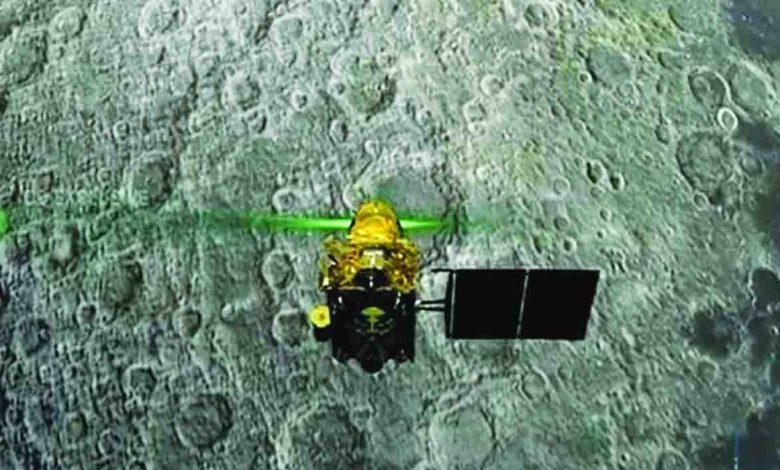Chandrayaan-2 finds water on Moon surface

Friday, 13 August 2021 | PNS | New Delhi
Probe spots OH also with much precise location
The Chandrayaan-2 orbiter has confirmed the presence of water molecules (H2O) and hydroxyl (OH) on the surface of the moon.
The researchers, who analysed the data obtained by the orbiter’s imaging infrared spectrometre (IIRS), said, “There is widespread lunar hydration and unambiguous detection of OH and H2O signatures on the moon between 29 degrees north and 62 degrees north latitude.”
“The initial data analysis from IIRS clearly demonstrates the presence of widespread lunar hydration and unambiguous detection of OH and H2O signatures between 29 degrees north and 62 degrees north latitude,” a research paper published in the journal Current Science revealed.
The August 10 research article is authored by former ISRO chairman AS Kiran Kunar from the Indian Institute of Remote Sensing (IIRS) Dehradun, SAC in Ahmedabad, UR Rao Satellite Centre and ISRO headquarters in Bengaluru.
“Plagioclase-rich rocks have been found to have higher OH or possibly H2O molecules when compared to the mare regions, which were found to have more dominance of OH at higher surface temperature,” the research paper said.
The Chandrayaan-2 mission was launched by Indian Space Research Organisation (Isro) in July 2019. Vikram lander on-board the mission crash-landed on the lunar surface just 2.1 km from its destination in September that year but the orbiter accompanying it has been providing useful information to scientists back on earth.
According to the researchers, the formation of hydroxyl or water molecules occurs due to a process called space weathering, which is when the solar winds blow over the lunar surface. It was also observed from the data that the brighter sunlit highland regions at higher latitudes of the moon were found to have higher hydroxyl or possibly water molecules.
The Chandrayaan-1 mission had already confirmed the presence of water on moon surface but due to limited spectral coverage, the exact nature of hydration could not be ascertained. However, the IIRS on-board Chandrayaan-2 moon mission has been able to completely characterise lunar hydratioon attributed to the presence of OH and H2O.
A successful moon landing would have made India the fourth country in the world to land a rocket on the moon after the US, the erstwhile USSR, and China, and the first to have landed close to the lunar South Pole. On September 24, 2009, NASA announced that the M3 instrument had detected water ice on the Moon.






